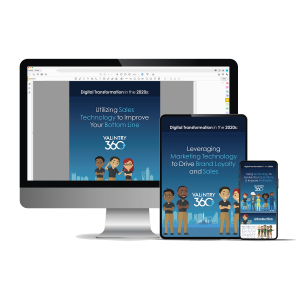
- Digital Transformation
As a leader, you are always looking to move the needle in your organization; whether that is growing revenue, customer satisfaction, or myriad other possible KPIs. Whatever way you choose to progress, there is a common roadblock that you’ve likely encountered: getting buy-in from stakeholders for new initiatives to drive that growth.
In our last post, we talked about four overall strategies that leaders could use to help improve adoption and ensure transformations become ingrained in the processes and culture of an organization. And the probably the toughest of these is getting stakeholder buy-in. But what can a leader do to start the process rolling and create the strongest probability of success?
Change starts with you, the leader. If you can’t get the person in the mirror to adapt how they manage change, you’ll never get your team on board with your transformation plans. When that happens, you can do more than just encourage your team to embrace change, you can get them excited about it! Here are four things you can do specifically to help you create and maintain stakeholder support.
Have a Strong Pitch
You should make your pitch early and often. When you make your pitch, focus on the 4 Ws and 1 H and be ready to repeatedly and confidently communicate:
- Why change is necessary
- What will change
- When it will change
- Who will benefit / be affected by the change
- How you will communicate progress and adapt to unforeseen issues and obstacles
For example, we work with executives to help their organizations through digital transformations of all types. One of the primary commonalities to every client’s project is ensuring they shift their mindset from company-centric to customer-centric. You’ll want to clearly outline a compelling business case on how the transformation will not only help them but also their customers, anticipate any objections, and have solutions for each (beyond the archaic “Because I said so”).
Additionally, lay out a roadmap or timeline on when the digital transformation will take place and how you will deftly navigate unforeseen challenges. These insights will give employees a better grasp of the end goal and help to alleviate many concerns about the unknown.
Involve the Stakeholders
You’re always want to sell the idea to your leadership team first. Getting them on board with the vision is a crucial endorsement for the rest of the company. Also, consider looping in mid-level leaders early in the process. Gaining support from them helps form a diverse group of stakeholders at different levels in the organization and this will make your pitch stronger because you will be able to address issues and concerns from areas you may not have originally considered.
Digitally Transform your Sales, Marketing, & Operations.
We can show you how.
In our latest eBook series, VALiNTRY360’s Salesforce® Experts explore how digitally transforming important sections of your operation can lead to significant returns for your business.

Be transparent
Frequent communication during the process is important in preventing underlying problems such as rumors, lack of engagement, or outright resistance to the change. The key to these messages is an open and honest review of how the change is panning out. Celebrate the wins but if goals and objectives aren’t being met, be specific about what failed, the obstacles involved, potential solutions, and key lessons learned. It’s usually best to do this type of update in a “town hall” or “all staff” meeting that should be held on a regular basis. And while it might difficult to admit you don’t have all the answers, this level of openness and vulnerability should give employees more confidence in their leaders and the process itself.
Be Open to Feedback
Another benefit to regular communication like these organization-wide update meetings is giving your team the opportunity to give feedback and be heard. While it can be challenging to collect and address feedback and questions from everyone, it is wise to make sure your plan incorporates some mechanism that makes gathering feedback and adapting solutions as efficiently as possible. For example, you could have representatives from each department sit on a task force to collect feedback and to also help you develop solutions to any issues that arise.
Conclusion
Whether you are implementing a digital transformation across a single department or are adopting new policies and procedures across the board, change is key to helping organizations innovate and grow. These strategies and your team are the key elements for success but if you still feel like you could use some help, our team of Digital Transformation experts would be happy to assist. We’ve helped organizations of all sizes across multiple industries successfully ideate, plan, implement, and evolve organizational change since 2013 and we’d love to do the same for you. Contact us today to get started!
Related Posts
- Digital Transformation
- EHR/EMR
- Health Cloud Solutions
- Healthcare and Life Sciences
- Patient Management Software
Streamlining Referrals with VALiNTRY360’s “Connect” Offering
VALiNTRY360’s "Connect" platform is designed to simplify patient referrals and ensure seamless care continuity. Its powerful features address common challenges in managing patient handoffs between providers. Patient Information Management in "Connect" securely stores patient profiles, history, and treatment details, making…
- Digital Transformation
Digital Transformation 101
What is Digital Transformation? Digital transformation can take on many forms depending on the needs and desires of an organization so it is difficult to create a single solution that fits every need. Still, VALiNTRY360 generally defines digital transformation as: Integrating digital…
- Digital Transformation
RELEASE: Digital Transformation Firm Helps Fight COVID-19
FOR IMMEDIATE RELEASE WINTER PARK, Fla., September 28, 2020 - VALiNTRY360, a digital transformation company, is helping the fight against COVID-19, but not in the traditional sense. They are implementing technology to support some of the true heroes, healthcare providers,…

